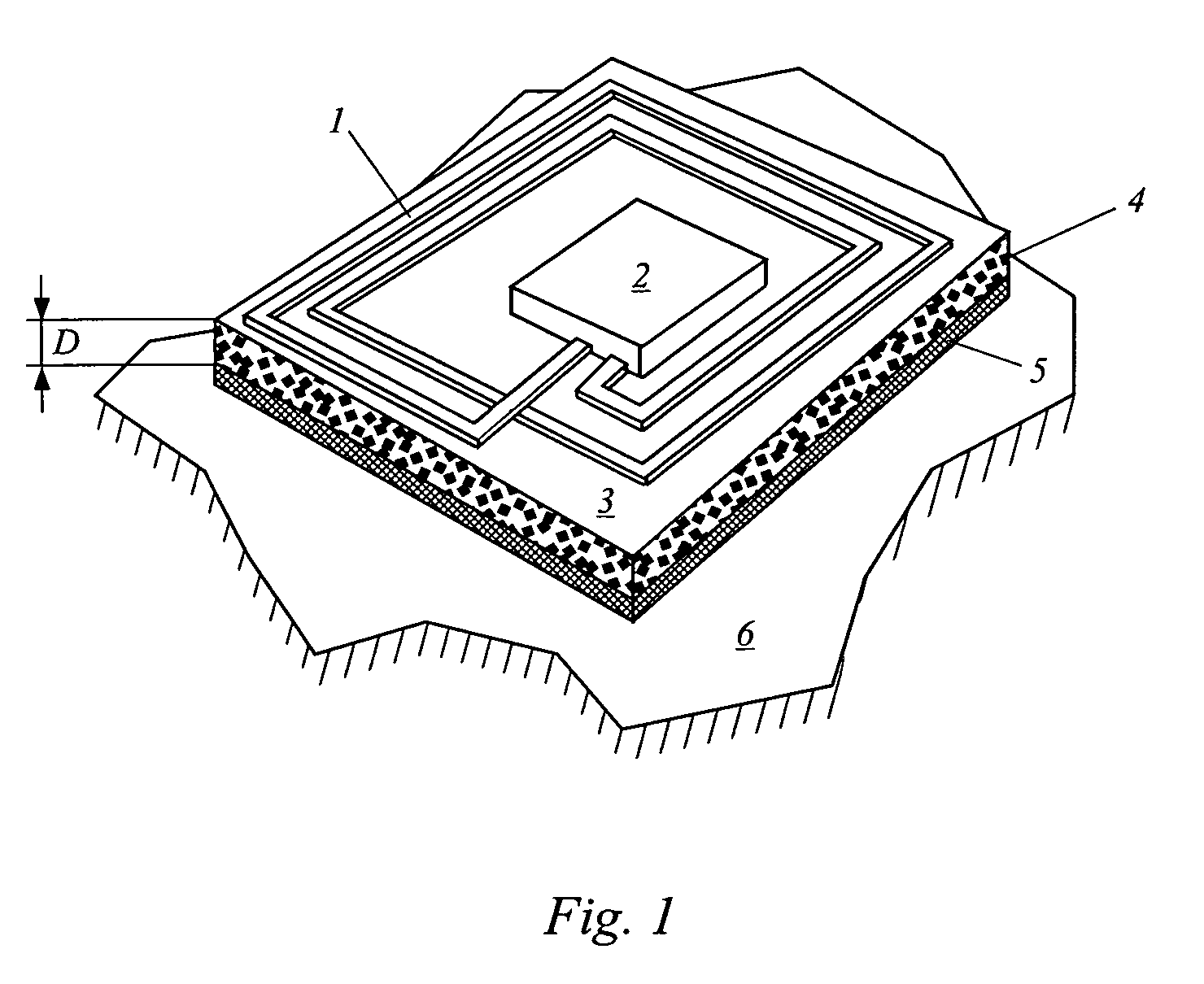Flexible transponder label which is readable on conductive surfaces
- Summary
- Abstract
- Description
- Claims
- Application Information
AI Technical Summary
Benefits of technology
Problems solved by technology
Method used
Image
Examples
Embodiment Construction
[0019]The transponder label shown in FIG. 1 has an antenna coil 1, a semiconductor chip 2, as well as a single-layer film 3 with the thickness D, which serves as a support film, for one, and for another, as a protection against the induction magnetic counter field in the metallic substrate 6, which affects a weakening of the oscillating magnetic field required for the transponder scanning.
[0020]The semiconductor chip 2 fulfills the function of a condenser element of the transponder resonance circuit, as well as the function of a storage component, on which specific data of the product are stored, a part of which represents the metallic substrate 6. The specific data, for example, can be a product code, a serial number, or the technical properties characterizing the product.
[0021]The film 3 comprises a flexible matrix, for example, silicon rubber, in which ferrite particles 4 are embedded, which bestow soft magnetic qualities on the film 3 and therewith are responsible for its shield...
PUM
 Login to View More
Login to View More Abstract
Description
Claims
Application Information
 Login to View More
Login to View More - R&D
- Intellectual Property
- Life Sciences
- Materials
- Tech Scout
- Unparalleled Data Quality
- Higher Quality Content
- 60% Fewer Hallucinations
Browse by: Latest US Patents, China's latest patents, Technical Efficacy Thesaurus, Application Domain, Technology Topic, Popular Technical Reports.
© 2025 PatSnap. All rights reserved.Legal|Privacy policy|Modern Slavery Act Transparency Statement|Sitemap|About US| Contact US: help@patsnap.com


